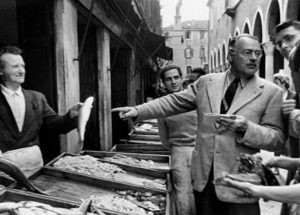Venice Itinerary on the trail of Ernest Hemingway
“How can you live in New York when there are Venice and Paris?”
Such a quote could only but be the introduction to an intense love story, which is the one between Venice and the famous US writer Ernest Hemingway. A relationship made of walks through the calli (narrow Venetian streets) and salizade (the widest and most important calli), of small escapes in the reeds and of that wonder that only the Lagoon can spark in the visitors’ eyes and hearts.
It was 1948 when Hemingway arrived in Venice with his fourth wife, Mary Welsh, after landing at the port of Genoa. His journey began quite by chance as the ship they were travelling on, originally heading to Cannes, had to stop in Liguria for technical reasons. Hemingway then decided to make the best out of the circumstances and took his stay in Italy as a journey to find his inspiration again. Indeed, after a ten-year break, it’s thanks to his stay in Italy that he finally managed to publish a new novel. He also traveled to Veneto, that he remembered from the times of the First World War, and then concluded his itinerary in Venice, where he stayed longer.
In today’s article we want to bring you back to that period, walking you through a short itinerary tailored on the key-places that marked Hemingway’s stay in Venice.
Hotel Gritti
The first place where Hemingway settled in is the Hotel Gritti. During his stay he met Count Carlo Kechler, who introduced him to Adriana Ivanchic, a beautiful young countess who immediately caught Hemingway’s attention. Despite their thirty years of difference, the two became inseparable, as well as a subject of gossip. Given the author’s fame as an alcoholic and womanizer, for the public opinion it was hard to believe him when he defined the relationship as merely platonic.
The publication of his novel “Across the River and into the Trees” further strengthened the gossip around them as the book, partly autobiographical, tells the passionate love story between Adriana and Hemingway’s alter egos, Renata and Colonel Cantwell in the book.
Speaking of which, we would like to point out that a film adaptation of the novel is expected to be released soon. The shooting of the film has recently taken place, not only in Venice but also in other areas of Veneto and Friuli.
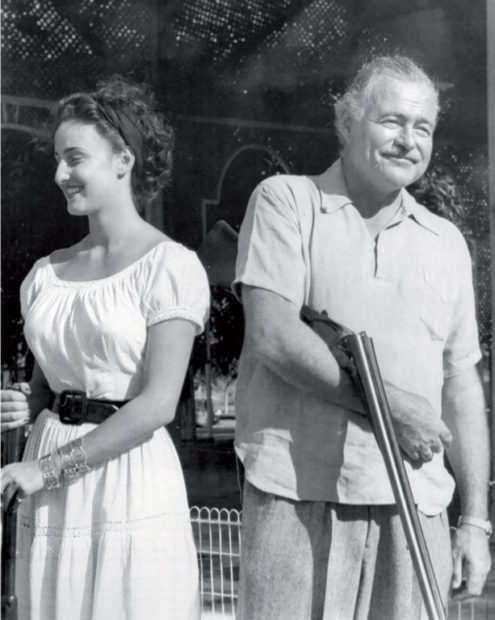
Harry’s Bar
When we say “being at home” we refer to a habit probably very close to the one Hemingway used to have with the Harry’s Bar (we mentioned it in the article Historic Cafes in Venice: elegance and tradition), later also declared national heritage by the Italian Ministry of Cultural Heritage.
Hemingway used to sit in this bar at his reserved table to pour his thoughts and stories on paper, always accompanied by a good drink. His favourite one was the Martini Dry, whose creator was himself indeed. He actually named it “Montgomery” after a general he met in the war, who had the reputation of attacking only when his forces were 15 against 1, the proportions of gin and vermouth of the famous cocktail.
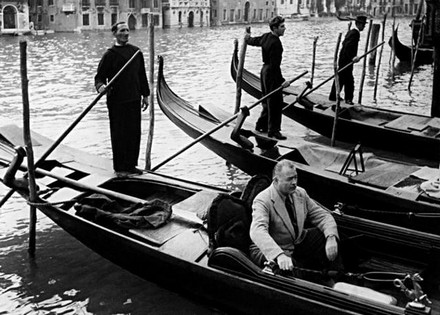
Torcello and the Locanda Cipriani
At Harry’s Bar Hemingway met Giuseppe Cipriani, owner of the bar and the homonymous Locanda (lit. inn), located on the island of Torcello. The Locanda Cipriani was originally the owners’ country house, but during the Second World War it was converted into an elegant restaurant to offer Harry’s customers a safer place.
“At 10pm – recalls Cipriani – he used to retire to his apartment to write, he wanted six bottles of amarone (a famous wine produced in Valpolicella, Verona) in his room. They lasted all night; in the morning we found them empty.”.
The Locanda Cipriani became a true refuge to Hemingway. He used to alternate writing and abundant drinking with duck hunting in the reeds of the island.
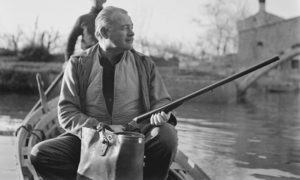
Hemingway, Venetian “by adoption”
There are many other places in Venice that were dear to Hemingway, such as the Rialto Market and the Café Florian in Piazza San Marco, but also the casoni (traditional fishermen houses) of Caorle, where he loved meeting with friends in the summer evenings.
We want to conclude this article by quoting the author’s probably most significant words regarding his bond with Veneto. Hemingway wrote to a friend:
“I’m a boy of the Lower Piave… I’m a Veneto’s old fanatic and I will leave my heart here”
